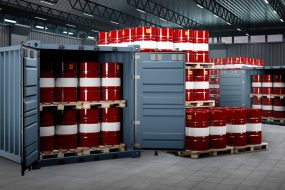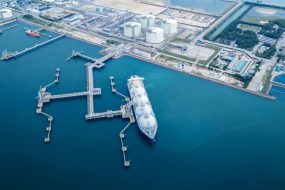The oil and gas industry stands to gain on multiple fronts if it applies the fourth party logistics model to its operations, like reducing lead time and promoting localisation.
It would be understandable to get caught up running oil and gas supply chains—anyone who has worked in the industry knows that it takes a huge number of individual components to keep a field up and running.
Then, consider that each company has multiple fields, probably in different locations, and that all of the items needed for all of these fields have to be available at the right place and at the right time, they have to be stored properly and transported promptly. Add the fact that the company probably has different logistics networks and operations at each of their warehouses and hubs, and it becomes a bit overwhelming.
That’s why companies are increasingly looking to fourth party logistics (4PL), says Georges Yacoub, Global Operational Key Account Manager at Aramex. It makes a lot more sense to have a single strategic partner (and logistics expert) looking after your full supply chain including the logistics companies handling individual warehouses, not only ensuring that everything runs smoothly on a day-to-day basis, but also offering their expertise to create strategies and improvements that can streamline operations.
“When a strategic logistics partner enters the equation for 4PL, it really means re-evaluating the structure of the supply chain to make sure it is optimised,” Firas says. Some changes might be simple, like installing vertical storage units to maximise usage of space and to make stock easy to reach. Others might include digital solutions, like a platform allowing the company to have greater visibility of their stock without having to be in the warehouse, and enabling them to quickly place orders within a tight timeframe.


One of the major benefits of 4PL is having one point of contact instead of dealing with multiple logistics companies for each location where the company is present. “An oil and gas supplier could have one or more warehouses in each country in the GCC,” Firas says. “That’s the reality in the industry. Under a 4PL system they would only have to communicate with the 4PL partner, who would be in communication with all of the other teams.”
Essentially, 4PL harmonises multiple chains into one interlocking network, removing silos and simplifying logistics management. The 4PL partner becomes the primary point of contact for the oil and gas company, and coordinates any existing workforce as well as its own people. With a strategic partner and industry expert in charge, work becomes much easier for oil and gas companies which no longer have to spend their time, effort and resources coordinating every part of the supply chain.
It is also a boost to localisation efforts, since operations are technically less centralised and focus more on developing a local presence, supply chain and workforce in each of the countries where they operate. Localisation is a major trend in the GCC, with countries and national oil companies implementing guidelines and programmes to encourage their partners to create a local business hub rather than working with companies that are not investing in the local economy and supply chain.
Although this does decentralise operations, the 4PL model is the centralising factor, so that despite having warehouses across a region, you have one point of contact that is easily accessible, connecting each of the locations so the company has better visibility of its logistics operations. “For companies looking to localise and grow their footprint, 4PL is a strong model,” Firas notes.
For companies in the oil and gas sector, this also has the added benefit of retaining your existing assets, like warehouses and much of your workforce, which is important when aiming to qualify for localisation programmes. Because the workplace belongs to the company, its rules and standards still apply, and it can switch to 4PL without disrupting its operations and workflow.
Ultimately, logistics operations are judged by lead time, and this is an incredibly important part of the 4PL model. A local supply chain and local operations mean that it is vastly easier and faster to get the needed items to the field instead of transporting them from a regional hub.
As long as your company functions well with an extended footprint, 4PL can provide a host of benefits allowing you to improve operations, simplify workflows, further develop localisation initiatives, and provide visibility across multiple countries from a single point of contact. “I believe that 4PL is the future of logistics,” Firas says.




